
One of the cheeses I was most excited to learn to make this summer at my two-day cheese making class at the Ploughshare Institute in Waco, Texas was goat cheese. Although it is an assertive cheese, it is also delicate, nutty and slightly sweet. I have eaten goat cheese a million times, but I was very excited to taste it on the same day it was made. I know not everyone loves goat cheese, but it was a very different taste experience eating it just moments after it was made. It was extremely delicate and subtle, and I think even a non-goat cheese lover might enjoy it freshly made.
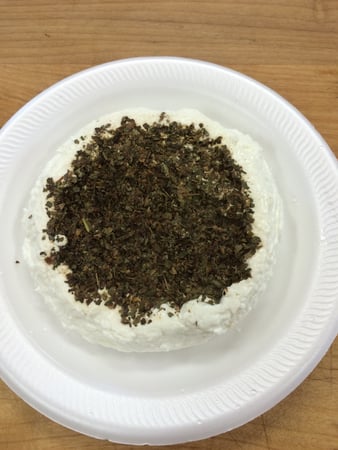 I'm sad to say that I haven’t made goat cheese since the class. Although the technique is relatively straight forward and there isn’t a ton of specialty equipment required… according to the instructor, fresh goat milk is required for this recipe. I haven’t looked hard but thus far haven’t sourced fresh goat milk. The instructor and other students in the class who have goats or source fresh goat milk also said that the best goat milk is from female goats who have no contact with male goats. Apparently the contact with the male goats changes something in their hormones and makes their milk funky. If anyone knows of a source for fresh goat milk in either the Chicagoland area, Indiana or Southern Michigan, please let me know. I would sure appreciate it.
I'm sad to say that I haven’t made goat cheese since the class. Although the technique is relatively straight forward and there isn’t a ton of specialty equipment required… according to the instructor, fresh goat milk is required for this recipe. I haven’t looked hard but thus far haven’t sourced fresh goat milk. The instructor and other students in the class who have goats or source fresh goat milk also said that the best goat milk is from female goats who have no contact with male goats. Apparently the contact with the male goats changes something in their hormones and makes their milk funky. If anyone knows of a source for fresh goat milk in either the Chicagoland area, Indiana or Southern Michigan, please let me know. I would sure appreciate it.
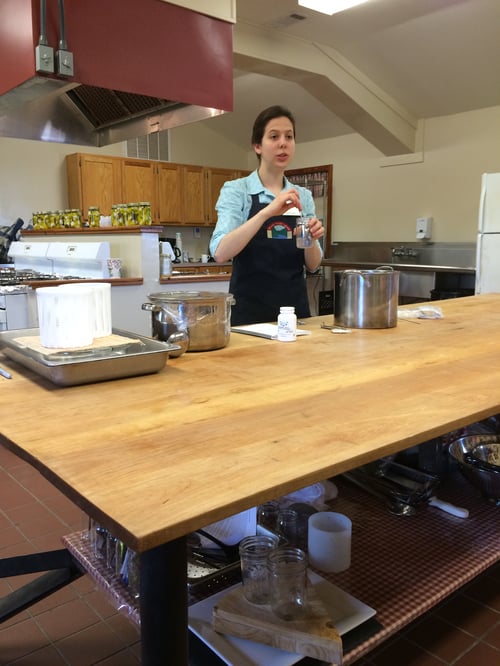 If you get your hands on some fresh goat milk, the rest of the procedure is pretty straightforward. We are using a Mesophilic starter for the first time in this series. This bacterial culture thrives at warm temperatures versus the hot temperatures the Thermophilic culture thrives in. The Mesophilic starter is used more frequently in hard cheeses, both are available alongside the 4” molds that are required to form the goat cheese online.
If you get your hands on some fresh goat milk, the rest of the procedure is pretty straightforward. We are using a Mesophilic starter for the first time in this series. This bacterial culture thrives at warm temperatures versus the hot temperatures the Thermophilic culture thrives in. The Mesophilic starter is used more frequently in hard cheeses, both are available alongside the 4” molds that are required to form the goat cheese online.
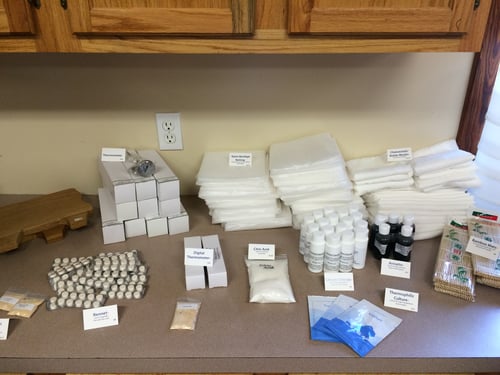 Keep in mind that when you are working with the rennet, you do not want to dissolve it in the cool water until right before you need it. If you use it too early, the rennet will start to lose its effectiveness very quickly and your cheese won’t thicken properly. Rennet doesn’t dissolve easily so it takes some stirring to get it to dissolve. There still may be a few visible very small pieces in there and that is okay.
Keep in mind that when you are working with the rennet, you do not want to dissolve it in the cool water until right before you need it. If you use it too early, the rennet will start to lose its effectiveness very quickly and your cheese won’t thicken properly. Rennet doesn’t dissolve easily so it takes some stirring to get it to dissolve. There still may be a few visible very small pieces in there and that is okay.
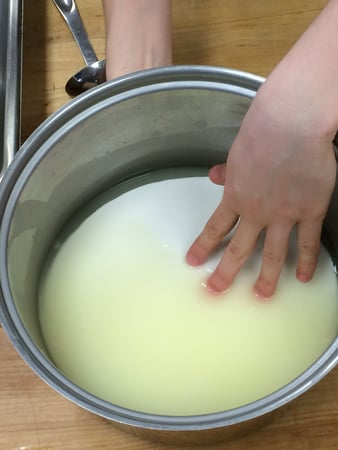
Goat Cheese
½ gallon fresh goat milk
1/16 teaspoon mesophilic starter
1/8 teaspoon rennet, dissolved in 1/8 cup cool water
Salt
Optional: dried herbs of your choice
- Heat the goat milk to 76 degrees. Add the dissolved mesophilic starter and mix well.
- Dissolve rennet and add to the warm milk and mix in. Cover the pot and let sit for 12 to 18 hours at room temperature. The room should be around 76 degrees. They recommended placing some mason jars filled with hot water around the pot and wrapping it all in a blanket. The curd will be firm, about the texture of soft tofu when done.
- Set 2-4 inch round molds on top of a bamboo mat, otherwise known as a sushi roller. We sell these at The Chopping Block for our popular sushi classes if you are local, otherwise you can get them online easily. Put the bamboo mat over a pan to catch the whey as it drips out. Put the molds on top of the bamboo mats and scoop the goat cheese curds into them. If you want to add some herbs please use dry ones as fresh herbs cause the cheese to decay more quickly and do not impart enough flavor. Just sprinkle the herbs over the top of the cheese, cover with cheesecloth and let drain for at least 8 hours.
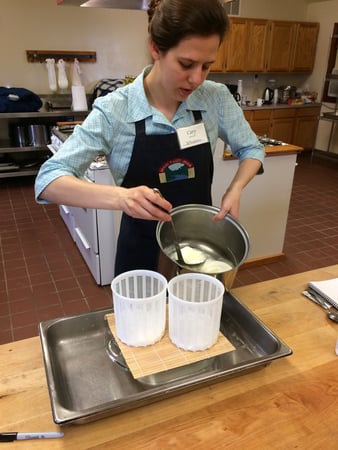
- Next you will want to gently flip the cheese and let drain for another 8 hours.
- The cheese wheels will have shrunken to about ¾” thickness when they are done. Gently remove the molds and sprinkle generously with salt on top and on the sides. You can eat immediately or keep refrigerated up to 5 days.
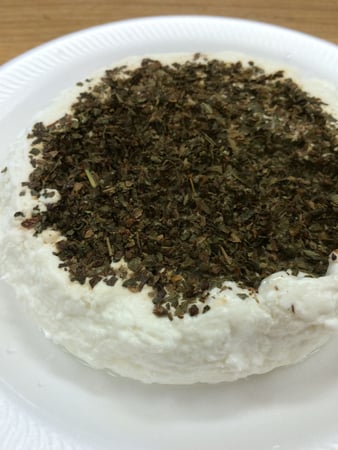 Please come back for the next chapter in this series: Feta cheese! And if you missed any of my earlier posts on the cheese making process, here they are:
Please come back for the next chapter in this series: Feta cheese! And if you missed any of my earlier posts on the cheese making process, here they are:
Cheese Making at Home Part 1: Butter, Buttermilk & Sour Cream
Cheese Making at Home Part 2: Cream Cheese & Yogurt
Cheese Making at Home Part 3: Labneh

